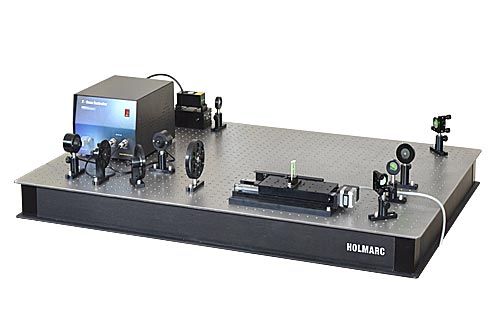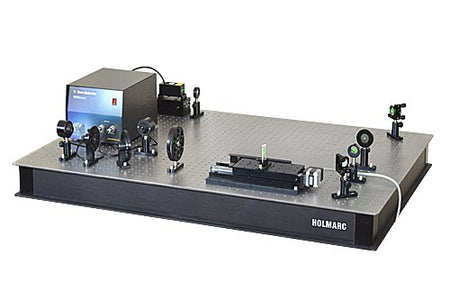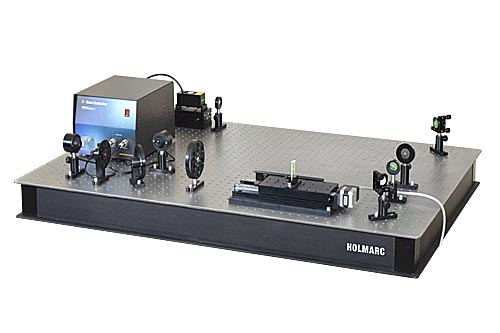HO-IAD-ZS-01A Z - Scan Characterization Kit Characterization of Transparent Optical Materials
Couldn't load pickup availability
Z - Scan Characterization Kit
Characterization of Transparent Optical Materials
The Z-Scan technique is a simple and popular experimental technique used to measure intensity dependent nonlinear susceptibilities of materials. Holmarc's Z-Scan System is a simple implementation of the z-scan technique that can be used to characterize optical materials.
In this method, the sample is translated along the axis of a focused Gaussian beam, and the far field intensity is measured as a function of the sample position. Analysis of the intensity versus sample position, Z-Scan curve, predicated on a local response, gives the real and imaginary parts of the third order susceptibility. In this technique, the optical effects can be measured by translating a sample in and out of the focal region of an incident laser beam.
Holmarc's Z-Scan System includes precision motorized stage for linear scanning, photo diode assembly along with mechanical mounts and control electronics for motion control and data acquisition. High power 532 nm CW DPSS Laser is used as the light source. Parameters like travel distance, data acquisition intervals etc. can be programmed using computer Interface.
Experiment:
To measure intensity dependent nonlinear susceptibilities of materials
The two measurable quantities connected with the z - scan are non linear absorption and non linear refraction. These parameters are associated with the imaginary and real part of the third order non linear susceptibility and provide important information about the properties of the material.
Features:
| 532nm CW DPSS Laser |
| Photo detector with spectral response range of 320 - 1100 nm |
| Optical breadboard make the system flexible |
| User - friendly software |
| Live plot during scanning |
Schematics:

Related Topics:
| Non linear absorption |
| Non linear refraction |
| Non linear susceptibility |






